- NEW DVD Series – Stone Setting with Bezels
- Tube Set Charm by Kim St. Jean
- Prong Basket Pendant by Kim St. Jean
- NEW DVD Series – Stone Setting with Cold Connections
- New DVD Series – Stone Setting with Wire
- NEW DVD Series: Introduction to Stone Setting by Kim St. Jean
- Featured Tool: Bracelet Bending Plier
- NEW Dvd by Eva Sherman
- Fun, Fast Fold Forming DVD Series
- Double Band Ear Cuff from Alex Simkin
Wire Jewelry Tip October 23: Beading A-B-C’s
by Narlene Allen, Wire-Sculpture.com
Wire Jewelry Tip of the Day for October 23, 2013
Beading A-B-C’s
Whether you are a beginner or experienced beader, it’s always good to know the basics. This week we’ll explore the A-B-C’s of beads and beading.
What is Beadwork?
The craft of making things out of beads is called beadwork. There are many different beadwork techniques and they can be broadly categorized below:
A: Bead stringing is the putting of beads on string. It can range from simply sliding a single bead onto any thread-like medium (string, silk thread, leather strap, thin wire, multi-stranded beading wire, or a soft flexible wire) to complex creations that have multiple strands or interwoven levels.
B: Bead embroidery is a type of beadwork that uses a needle and thread to stitch beads to a surface of fabric, suede, or leather.
C: Bead crochet is a crochet technique that incorporates beads into a crochet fabric. The technique is used to produce decorative effects in women’s fashion accessories.
D: Beaded knitting is a type of knitting in which the stitches are decorated with ceramic or glass beads.
E: Bead weaving using seed beads can be done either on a loom or using one of a number of off-loom stitches.
F: Off-loom bead weaving is a family of bead work techniques in which seed beads are woven together into a flat fabric or a three-dimensional object such as a ball, clasp, box, or a piece of jewelry.
What’s in a bead?
The word bead comes from the Anglo Saxon words bidden (to pray) and bede (prayer.) Beads have been around since the first known civilizations. The oldest known examples of jewelry are an approximately 100,000 year old pair of beads made from sea snail shells. Apart from being used in jewelry and personal adornment beads are also used for religious purposes, good luck talismans and curative agents.
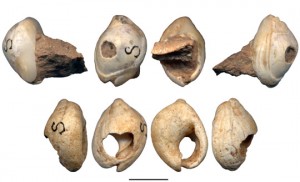
The two perforated shell beads found in what is now Israel, shown at different angles. Used in a shell necklace.
Beads were probably the first durable ornaments humans possessed, and the intimate relationship they had to their owners is reflected in the fact that they are among the most common items unearthed from ancient graves. In tribal cultures still, certain beads are often worn from birth until death and are buried with their owner for the afterlife.
Prayer beads are known world-wide and help the user recite prayers and keep track of the sequence and number of the prayers. Worry beads, also common around the world, help with decision-making and keep the hands busy. Beads continue to be used as talismans to protect the wearer against evil, and as amulets to bring wisdom and fortune.
What are beads made from?
Beads can be made from all kinds of different material, but glass, plastic and stone tend to be the most common. However, beads are also made from many other materials including bone, horn, shell, ivory, coral, pearl, metal, gemstones, polymer clay, metal clay, resin, wood, ceramic, fiber, paper, seeds and synthetic materials. As you can see, the choice is vast when it comes to deciding what materials you would like to work with.
Terminology: “Seed bead” is a generic term that is often applied to any small bead, so don’t get confused by the ter. It doesn’t necessarily mean that the bead is made from seeds, which some beads are.
Beads and their Symbology:
There are a number of symbols used the world over in beads and other objects, and it’s useful to know the meanings of these. Symbolism, too, entails a huge body of work. Below are a few interesting meanings.
A. Spiral: a symbol of being, knowing or becoming.
B. Circle: totality, perfection, unity, eternity.
C. Eye: occult 3rd eye, or eye of the heart can mean spiritual perception. Sometimes an eye is painted on an object to protect against the evil eye. Blue is a favorite color for these.
D. Dots: are also called eye beads and were used to protect against the evil eye.
E. White: purity, innocence, truth, sacred or divine
F. Black : loss, absence
G. Red: life, strength, vitality, physical nature
H. Yellow: intellect, mind
I. Green: harmony, sympathy, higher mental plane
J. Blue: inspiration, devotion, the spiritual nature
A-B-C’s of Essential Tools:
A. Round nose pliers: Round nose pliers are used for bending wire and making loops. This will probably be one of the beading tools you’re going to use most. It is important that you buy jewelry making pliers and not hardware store pliers which are too big for jewelry projects. If you’re going to use your round nose pliers for many projects then it’s worth investing in good quality pliers.
B. Chain or flat nose pliers: Chain nose and flat nose pliers are used for almost everything else, from holding your pieces to opening and closing chain links and jump rings. These two pliers can do more or less the same job, but sometimes you might need a longer nose plier to get into tight spaces. In that case, the chain nose might be a better option.
C. Wire or side cutters: Wire or side cutters are used to cut stringing material and light gauge wire.
Other Useful tools:
A. Crimping pliers:Crimping pliers are specially designed for crimping beads. This comes in handy when you want to make sure your beads are securely in place.
B. Scissors: Small sharp scissors can be very useful for all beading projects.
C. Awl: An awl is a beading tool used for knotting. The awl makes it easier for you to make consistent and tight knots.
D. Bead board: Bead boards have a curved groove with a measuring scale alongside with compartments in which the beads can be held while you work. This will end your frustration of all the beads ending up on the floor!
E. Adhesives: Resin based glues are ideal for use with metal, china and glass. All purpose clear, strong adhesives are useful for sticking non-metal items such as wooden beads.
F. Tweezers: Tweezers can be one of the handiest tools for picking up tiny beads when stringing.
G. Hammer: A hammer can be used to flatten wire which will harden the wire and will therefore keep its form better.
H. Beading needles: You will need a beading needle when you are working with thin thread and tiny beads.
I. Measuring stick: Some or other form of measurement is always useful. A metal ruler with inches on one side and mm, cm on the other side is perfect for the beader.
Beading today:
Today beads play an intricate role in modern fashion; not unlike it did in the beginning of bead stringing Beading has gained popularity and died off only to come back again each time with a new look. In today’s fashion they are widely used in the form of necklaces, bracelets and earrings. Designers “Wow” us with stunning contrasts of colored gemstones, silver, gold or copper metals; and beads carved into various shapes.
Wrapping it up:
Whether you are beading for personal enjoyment, spending time with friends, or beading as a profession; this ancient craft is a long standing form of expression. I hope that you enjoy your journey into the wonderful world of beading!
We are always looking for submissions for weekly tips or new wire artists! If you have an amazing pattern that you’d like to share, simply Click Here to submit your idea. You could be featured on our Blog or we might pick your pattern!
Resources:
- Sea Shell Beads
- Seed Bead History
- Beads in History
- Beading Styles and Tips
- Pictorial Gallery of the history of beads.
Free Bead and Wire Patterns on Wire-Sculpture.com
Click to Receive Daily Tips by Email





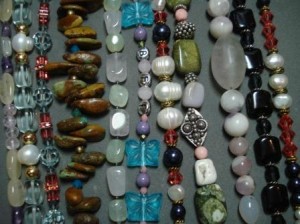
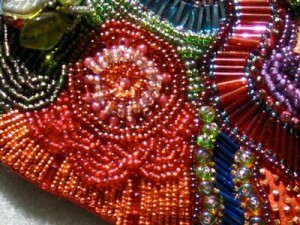
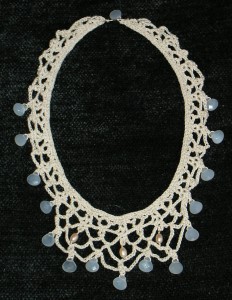
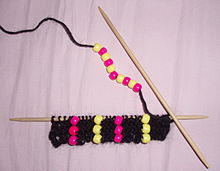
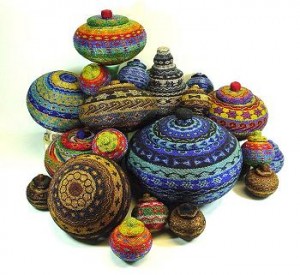
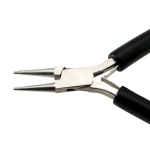

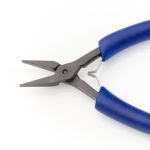

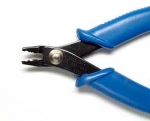

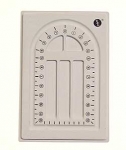
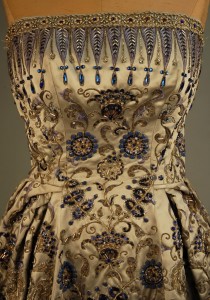

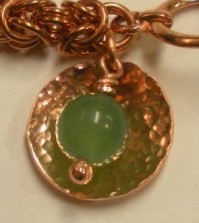














Maxanne
October 23, 2013 at 8:25 am
I’m looking for a wire-wrap pendant design for deep stones. I’m a big fan! Thanks!
Lorraine
October 23, 2013 at 12:25 pm
I would like to Make a suggestion about earrings. Whether beaded on string or wire, or wire wrapped in some form, make them match. I see many earrings with the exact same colors in the exact same place on each earring. This is not a match.
When using multiple colors, they should match perfectly. Lets say you are making a wire looped earring set of half black beads and half white beads. If you place the black beads on the left of one earring loop, then the other earring should have the black beads on the right side of the earring loop. This is called Symmetry.
I had a test among my friends. I made 2 pair of earrings, same colors and design. One pair in Symmetry as described above, and one pair with colors all in same place. When asked which pair they would buy, they all chose the Symmetry pair.
I do realize a lot of people pay no mind to this. but non Symmetry in earrings is like wearing a black shoe with white design and a white shoe with black design. While different, it looks dumb.
Just my opinion.
Thanks,
Lorraine
Fega
November 29, 2013 at 7:47 pm
@Narlene Allen…thanks for this article.
@Lorraine…good to know someone thinks about symmetry too…(I call it mirror effect)